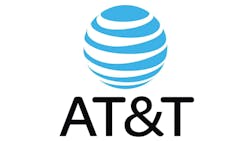AT&T advances its fiber and wireless converged service vision forward
Keep up to date with Lightwave’s earnings coverage.
You can check in our publication’s key segments:
And
Also, here are more stories on AT&T:
· AT&T fiber expansion on track to pass 30 million locations by mid-2025
· AT&T sets path to reach 60M fiber locations by 2030 with Lumen fiber business acquisition
AT&T likes its position in the ever-evolving wireline and wireline convergence segment, as it sees its broadband and wireless customer base growing.
AT&T is seeing that its ability to offer fiber broadband with wireless is resonating with its customer base--all of which is being driven by broadband.
Speaking to investors during its second-quarter earnings call, John Stankey, CEO of AT&T, said that “we nearly tripled our quarterly total broadband net adds in only one year.”
“Customers continue to choose AT&T because of the simplicity of our offers, the quality of our services, and increasingly, because they want to be served by one connectivity provider,” he said. “Our convergence trend accelerated in the second quarter, driven by growth in new customer relationships that subscribe to both our fiber and 5G services.”
Like earlier quarters, AT&T continues to find that its wireless share is higher in areas where it offers fiber broadband services.
“We're all seeing the high rates of converged service adoption among our Internet Air customer base, as well as lower churn and improved lifetime values compared to standalone services,” Stankey said. “We view this as further evidence that our brand can attract broadband Internet customers nationwide while also driving share gains and Mobility where we offer fiber or AT&T Internet Air.”
A key element of its converged strategy is the AT&T Guarantee, which aims to provide reliable connectivity, competitive deals, and prompt customer service.
Specifically, the guarantee includes bill credits for service interruptions, deals on smartphones, and a commitment to connect customers with tech support within 5 minutes or offer a callback.
Already, AT&T is seeing benefits of the AT&T Guarantee. Since launching the AT&T Guarantee in January, the telco has seen improved net promoter scores among its wireless and fiber customers following a network event
“It’s clear that we're winning with customers,” Stankey said. “And our performance through the first half of the year highlights the returns we're achieving as we accelerate our fiber deployment and complete our wireless network modernization.”
One Big Beautiful Bill Act benefits
AT&T sees its convergence initiatives being boosted by the pro-investment elements of the Trump Administration’s One Big Beautiful Bill Act.
As a result of the policies outlined in this legislation, AT&T plans to accelerate its fiber deployment pace.
By the end of 2026, AT&T plans to make investments in its network to reach an additional 4 million fiber customer locations annually.
AT&T’s organic fiber builds will be bolstered by its pending acquisition of Lumen’s consumer fiber business and its Gigapower open access joint venture.
Through this acquisition, AT&T will gain access to Lumen's substantial fiber construction capabilities within its incumbent local exchange carrier (ILEC) footprint and plans to accelerate the pace of fiber deployment in these territories.
“As a result of our stepped-up investment, we now expect that by the end of 2030, we'll reach approximately 50 million customer locations in more than 60 million fiber locations when including the Lumen Mass Markets fiber assets we've agreed to acquire, our Gigapower joint venture, and agreements with other commercial open access providers,” Stankey said. “This would double our fiber reach from more than 30 million total locations, a milestone we reached ahead of schedule during the second quarter.”
Internet Air possibilities
While AT&T is keen to implement its converged strategy with its fiber base, AT&T sees opportunities to enhance the capabilities of its Internet Air service customer base.
AT&T Internet Air is a 5G fixed wireless internet service offered by AT&T, providing an alternative to traditional wired internet options, such as fiber or cable, in areas where these options aren't available. It utilizes AT&T's 4G LTE and 5G networks to deliver internet to your home
During the second quarter, AT&T’s Internet Air customer additions surpassed 200,000 for the first time.
Pascal Desroches, CFO of AT&T, said the growth of Internet Air shows that its “success driving broadband growth and adoption of converged offers is not limited to our fiber customer base.”
“As a result, we exited the second quarter with over 1 million consumer Internet Air subscribers,” he said. “One driver of our ramp in AT&T Internet Air customers has been our wireless network modernization efforts, which have materially expanded the coverage of our mid-band spectrum and therefore, the regions where we can offer the service.”
Desroches added that AT&T’s broadband strategy prioritizes fiber, and that Internet Air could be a potential target for fiber broadband.
“We are increasingly able to offer Internet Air today in areas where we intend to offer fiber in the future,” he said. “This positions us to leverage Internet Air's creative funnel of broadband customers that we can migrate to fiber over time as we expand Fiber as a Service areas where these customers live.”
Broadband drives consumer wireline revenues
Fiber broadband was, not surprisingly, a significant contributor to AT&T’s second-quarter consumer wireline results.
Driven by an 18.9% increase in fiber revenue growth, AT&T’s Consumer Wireline segment achieved strong broadband revenue growth—fiber broadband revenues of $2.1 billion.
However, the growth was partially offset by declines in legacy voice and data services, as well as other services.
Consumer Wireline also delivered positive broadband adds for the eighth consecutive quarter, driven by 243,000 AT&T Fiber net adds and 203,000 AT&T Internet Air net adds.
“This represents nearly 450,000 new subscribers to our most advanced broadband services, driving further acceleration on the pace at which we're growing our base of home Internet customers,” Stankey said. “We nearly tripled our quarterly total broadband net adds in only one year.”
AT&T’s total second-quarter revenue was $30.8 billion, up 3.5% from $29.8 billion in the year-ago quarter. This company attributed the revenue increase to higher Mobility and Consumer Wireline revenues, partially offset by declines in Business Wireline and Mexico, which were also impacted by unfavorable foreign exchange effects.
For related articles, visit the Business Topic Center.
For more information on high-speed transmission systems and suppliers, visit the Lightwave Buyer’s Guide.
To stay abreast of fiber network deployments, subscribe to Lightwave’s Service Providers and Datacom/Data Center newsletters.
About the Author
Sean Buckley
Sean is responsible for establishing and executing the editorial strategy of Lightwave across its website, email newsletters, events, and other information products.



